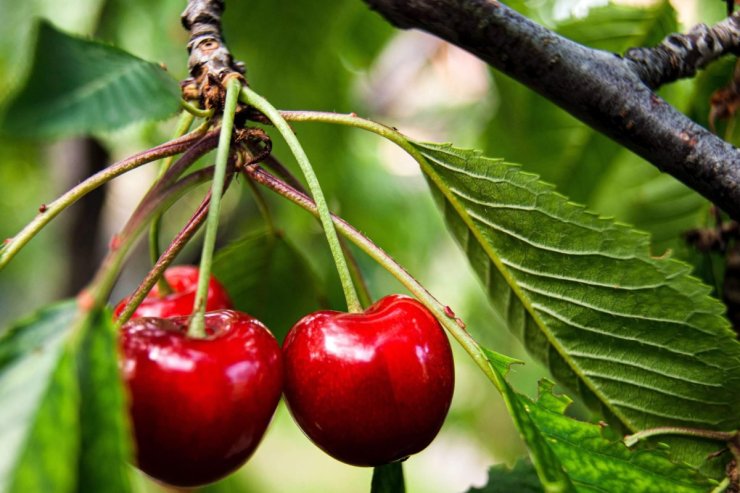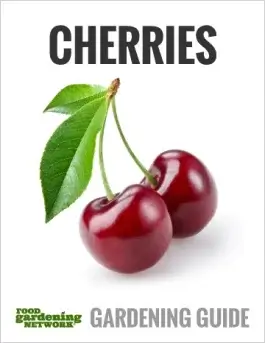I adore cherries. I remember one of the first times as a child that I pulled a fresh, ripe cherry from a tree and plopped it in my mouth. To say it was transcendent would be an understatement. I knew at that moment that someday I would want to grow cherries. And if you’re at all like me, you probably also want to know how to make your cherries bigger.
There’s just nothing like a bowl of big, juicy cherries. But growing bigger and faster cherries can be a daunting task for any gardener. However, with the right techniques, you can make your cherry crop larger and quicker to ripen. Here is how you can do it.

How to make your cherries bigger in 7 simple steps
1. Plant the right variety. Different varieties of cherries have different characteristics when it comes to how quickly they grow and how big they get. Choose a variety that is known for growing quickly and having large fruits if you want bigger cherries. Dwarf varieties may have smaller fruit, so avoid planting those if size is your goal. Learn more about types of cherry trees!
2. Space your trees appropriately. If your trees are spaced too closely together, competition for nutrients, water, and light will prevent them from reaching their full potential size. Make sure to give them adequate room to grow and spread out at the roots; this will give each tree the opportunity to take up more resources from the soil and reach its maximum size potential.
3. Prune strategically. To ensure the best results for your cherry trees, plan to prune them annually during their dormant season. If you live in USDA Hardiness Zone 6 or higher, it’s advisable to wait until late winter. Not only can pruning your cherry tree provide you with the benefits listed above, but it will also help to form a strong structure. In its natural state, your cherry tree’s shape may not be ideal for maximum fruit growth and production. Pruning is essential in developing an appropriate scaffold that encourages the healthy development of both branches and fruit-bearing shoots. Learn more about pruning cherry trees.
4. Provide adequate water. If you’re wondering how to make your cherries bigger and juicier, this is a must. Water your cherry tree sufficiently to ensure that the roots are soaked. Make sure not to overdo it, even if you’re in the midst of a drought-induced brown lawn situation. Giving water once every seven to 10 days (or even just every two weeks) is more than enough; overwatering can lead to saturated, drowning roots, which will be far worse off than dry ones!
5. Promote pollination. Hand-pollination using a small paintbrush or cotton swab is an effective technique for ensuring that all flowers get adequate coverage from pollinators, increasing fruiting speed by a significant amount compared with relying solely on natural methods alone. This process involves transferring pollen from one flower’s stigma (female reproductive organ) over onto the other flower’s anther (male reproductive organ), which should ideally occur within two days after blooming has begun. This isn’t reasonable advice for large trees, or for a number of trees, but if you are nurturing a young cherry tree, this is a method you could try.
6. Fertilize during the growing season. When caring for a cherry tree, less is more. Opt for using a low-nitrogen fertilizer like 5-10-10 or 10-15-15 to ensure that your tree isn’t overfed. If you provide too much nourishment to the soil, it may lead to an unbalanced environment that hinders fruit production and makes the tree susceptible to pests and disease.
7. Protect from pests and diseases. Insects like Japanese beetles or aphids can severely damage cherry trees by eating away bark or foliage, resulting in stunted growth rates due to lack of nutrition going into plant organs such as leaves, stems, and roots. Therefore, regular monitoring should take place throughout the seasons in order to identify any potential pests before they become major problems that require extreme measures like chemical treatments, which could further complicate matters.
With careful maintenance, planning, and effort, anyone can produce bigger cherry crops that ripen faster than previously thought possible while still enjoying all the benefits associated with growing your own produce right at home. These tips should serve well towards achieving better results over time, especially if patience is exercised throughout, until ripe fruits eventually appear ready for consumption! Yum!
 Are you thinking about growing cherry trees? Or wondering how to make your cherries bigger, juicier, and faster-growing? Take a look through our gardening guide, All Things Cherry, the Sweet and the Sour.
Are you thinking about growing cherry trees? Or wondering how to make your cherries bigger, juicier, and faster-growing? Take a look through our gardening guide, All Things Cherry, the Sweet and the Sour.
Learn about the different types of cherry trees, and get detailed information on planting, water, fertilizing, and pruning cherry trees. Plus, enjoy several recipes highlighting your fresh harvest of cherries. Definitely don’t miss the Vanilla Cherry Ice Cream!


 Previous
Previous

